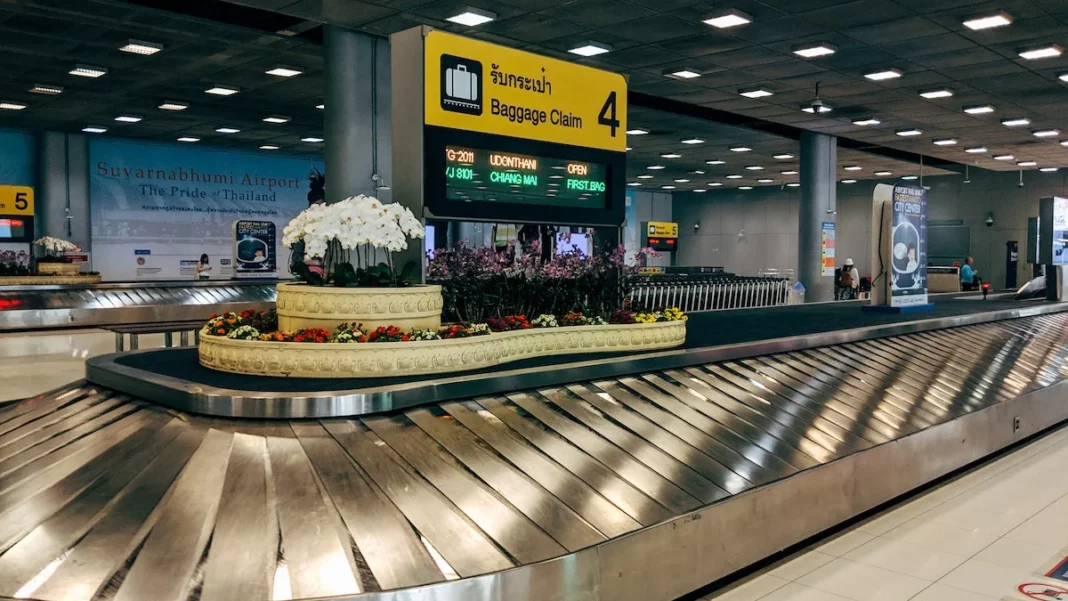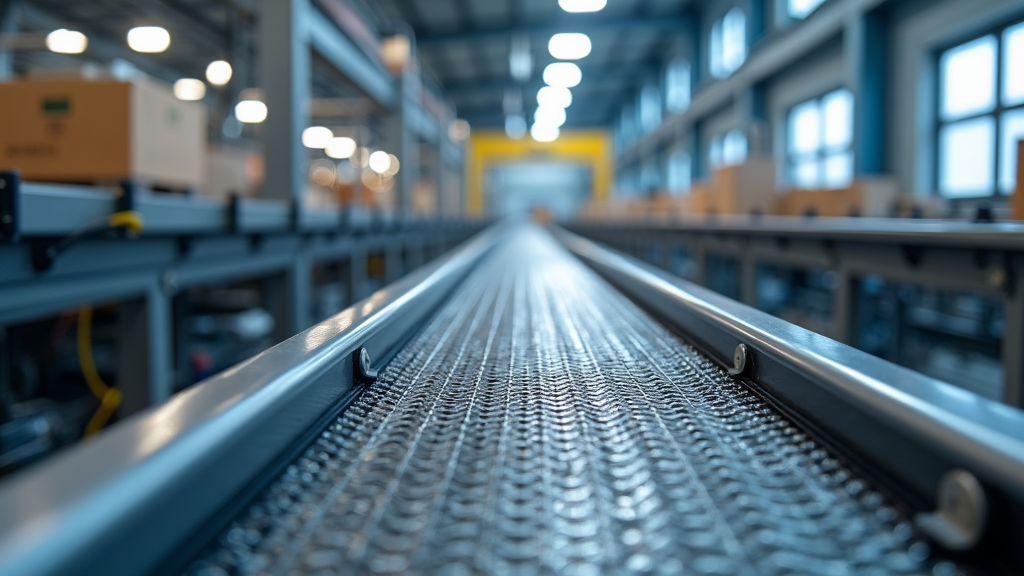Conveyor belt systems play a pivotal role in efficiently transporting materials within industrial or controlled environments. It is a durable handling solution widely utilized in warehouses, production, and manufacturing facilities to transport goods or products within a designated area securely. Because of its robust construction and reliability, it makes the preferred choice for efficient and safe transporting of materials.
The Essential Components of a Conveyor Belt System
Conveyor systems consist of three main components: the aluminium profile, the driving unit, and the extremity unit.
● Aluminium Profile
This includes the frame, belt, and supports. Conveyor systems can use belts powered by motors, gravity, or manual force. Motorized conveyor belts are preferred for industrial use due to their reliability and efficiency. The driving unit for motorized systems includes the motor bracket, electrical drive, and counter bearings.
● Extremity Unit
This part includes clamping straps and pulleys. Additional stands or lateral guides may be needed for specific functions. Choose optional add-ons based on your industry’s requirements.
● Driving Unit
- Frame: Provides a secure framework for smooth operation.
- Belt: A durable material for transporting goods.
- Conveyor Belt Support: Rollers keep the belt on track and prevent sagging.
- Driving Unit: Utilizes motors with variable or constant speed-reduction gears.
- Pulleys: Strategically positioned to control the belt’s movement and perform critical functions.
- Clamping Straps: Used to hold down fixtures and work components.
- Add-on Modules: Stands and lateral guides for further reinforcement.
Conveyor belting materials vary, including leather, metal, fabric, rubber, and plastic. Choose the appropriate thickness and strength based on operating conditions.
How Do Conveyor Belt Systems Work?
A Belt Conveyor System consists of two or more pulleys with a belt looped over them, forming a closed loop for continuous rotation. This design allows for the seamless transportation of products or materials from one point to another. The drive pulley, equipped with a motor, powers the belt, causing it to move in the desired direction and facilitating the movement of items.
To ensure the conveyor belt operates at its best, both the drive pulley and idler pulley must rotate in the same direction, either clockwise or counter clockwise. This synchronization ensures a smooth and efficient conveyance of goods, minimizing disruptions and enhancing overall productivity. Belt Conveyor Systems are widely used in various industries to streamline material handling processes and improve efficiency. Their straightforward design and reliable operation make them a preferred choice for transporting goods within manufacturing plants, warehouses, and distribution centres.
Different Uses of Conveyor Belts
A conveyor system offers versatile uses, including:-
● In transporting large quantities of material
Conveyor systems can rapidly and reliably move substantial amounts of goods or materials, making them ideal for handling bulk items in industries like manufacturing, mining, and logistics.
● Stacking materials at the end of the line
Conveyors can be designed to stack materials or products neatly at the end of a production or transportation line, optimizing space utilization and facilitating easy access for further processing or storage.
● In Simplifying point-to-point movement
By providing a continuous and automated flow, conveyors streamline the process of moving items from one location (Point A) to another (Point B) within a facility. This enhances overall productivity and reduces manual handling.
● In flexibly moving products vertically or horizontally
Conveyor systems offer a high degree of adaptability, allowing products or materials to be transported vertically or horizontally. This versatility makes them suitable for a wide range of industries and applications.
Applications of Conveyor Belts Systems in Various Industries
Conveyor systems are essential in various industries due to their efficiency and reliability. Here are a few critical applications mentioned:
● Airport Operations
An airport baggage conveyor belt can efficiently process and transport passenger luggage, ensuring swift loading and unloading. The baggage carousel exemplifies this application, where luggage is securely loaded onto the belt and seamlessly delivered to the terminal for passenger access. The continuous circulation of the belt optimizes efficiency in the baggage reclaim area.
● Pharmaceutical Industry
In the pharmaceutical industry, the conveyor belt systems handle the transportation of cardboard boxes or pallets filled with medical supplies during packaging and distribution processes. Manufacturing and mining sectors utilize conveyor belts to move substantial material quantities through tunnels, roads, and steep slopes. These industries rely on durable belting materials and well-designed support rollers to ensure the system’s smooth operation.
● Manufacturing and Mining
Conveyor systems available at Stout Conveyors and similar companies can handle the transportation of large quantities of material through tunnels, roads, and steep slopes. Sturdy belting materials and support rollers are crucial for durability and performance in these industries.
● Food Processing
For food processing, conveyor belts are indispensable, facilitating the entire life cycle of food items. From spreading, stamping, and rolling to glazing, frying, slicing, and powdering, each step of the process is efficiently accomplished as products smoothly move along the belt. Conveyor belts significantly reduce the need for manual labour, enabling the mass production of high-quality food items.
● Mass Production Benefits
Conveyor belts reduce the need for extensive manual labour, allowing industries to produce goods in large quantities with uniform quality standards.
● Industry-Specific Requirements
Each sector has specific needs, leading to the customization of conveyor belts for various applications. From shipyards and power plants to bakeries and ice cream plants, the conveyor belt is a reliable utility.
Advantages of Conveyor Belt Systems
1. Easy & Fast Transportation of Materials
Conveyor systems offer a swift and efficient means of transporting materials from one point to another within a facility or across multiple locations. The continuous loop created by the conveyor belt allows for seamless movement of goods, significantly reducing the time required for material transfer.
2. Reduce Labour Costs and Enhance Productivity
By automating the material handling process, conveyor systems substantially reduce the need for manual labour. This leads to cost savings on workforce expenses and enables companies to reallocate human resources to more value-added tasks. The increased efficiency and productivity further enhance overall operational output.
3. Prevent Human Injury and Product Damage While Transportation
With conveyor systems, the need for manual handling of heavy or bulky items is minimised, mitigating the risk of employee injuries. Moreover, the smooth and controlled movement of materials on the conveyor belt prevents product damage, ensuring goods arrive at their destination intact and in good condition.
4. Multi-Floor Material Movement Made Easy
Conveyor systems equipped with vertical conveyance capabilities facilitate the movement of materials across different floors or levels within a building. This vertical integration streamlines material flow, making it easier and more convenient to transport goods between various areas in a multi-story facility.
5. Very Helpful in Truck Loading and Unloading
Conveyor systems are precious during the loading and unloading of trucks and containers. The conveyor belts can be extended into the vehicle, allowing for efficient and rapid loading and unloading of goods. This process reduces loading time, optimizes space utilization, and enhances logistics operations.
The Final Thoughts
Godrej Korber provides expert conveyor belt solutions, including custom consultation, fabrication, installation, and repair services. Whether you need a new conveyor belt or maintenance support, they have the expertise to keep your operations moving smoothly. Get in touch for reliable conveyor belt services and more.
Read More: Inverter for Home: 6 Features to Look For
Josie Patra is a veteran writer with 21 years of experience. She comes with multiple degrees in literature, computer applications, multimedia design, and management. She delves into a plethora of niches and offers expert guidance on finances, stock market, budgeting, marketing strategies, and such other domains. Josie has also authored books on management, productivity, and digital marketing strategies.



